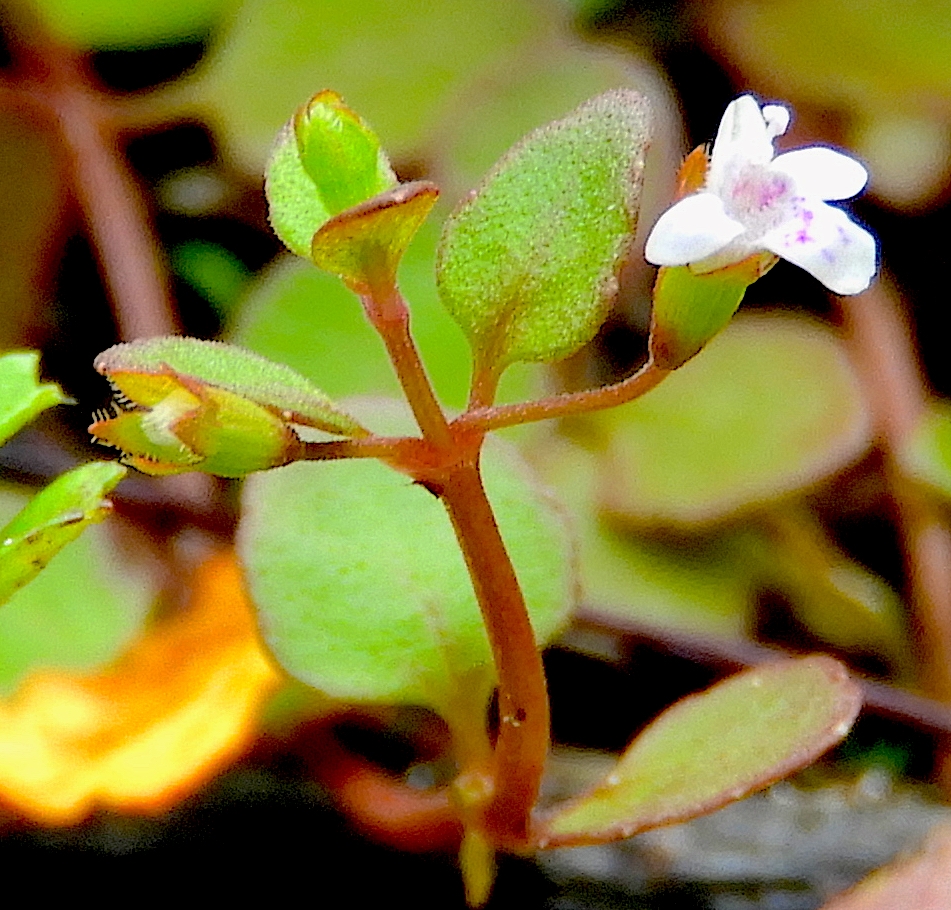Habit: Clinopodium brownei grows as a perennial up to 40 cm (usually lower) in height. The leaves are arranged oppositely to 2 cm in length, ovate to suborbicular with a slightly crenate leaf margin and rounded leaf apex. All vegetative material may or may not be pubescent.
The complete, perfect, zygomorphic flowers are arranged in few flowered cymes. The calyx has 5 fused, reddish green sepals forming a tube that may be pubescent. The corolla has 5 fused white (with pink areas), pubescent petals with 3 lobes below and 2 lobes above. There are 4 stamens fused to the corolla. The ovary is superior with 4 locules each with a single seed. The fruit is an aggregate of nutlets.
Habitat: Clinopodium brownei grows in sink holes and wet areas around Sabal palmetto Woodlands.
Distribution: Clinopodium brownei occurs on all island groupings in the Lucayan Archipelago, the Greater Antilles, and Central and South America.
Medicinal/Cultural/Economic usage: Clinopodium brownei is used in the Lucayan Archipelago to treat obstetric and gynecological issues.

